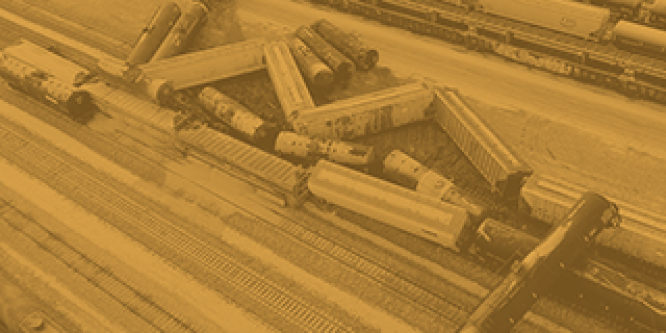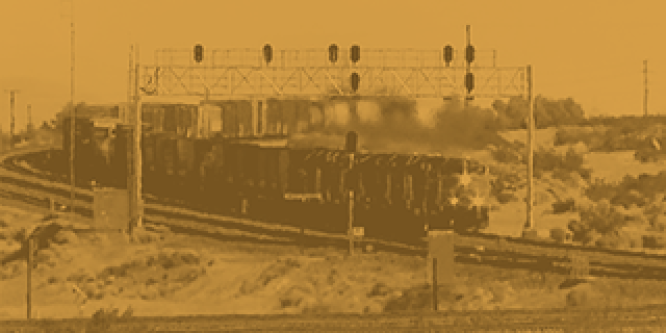Rail transportation

Following railway signal indications
Dataset from January 1983
With a view to advancing transportation safety, the TSB is publishing data from its Rail Occurrence Database System (RODS) on reportable accidents and incidents (which together are called occurrences) for use by industry and the public. The TSB gathers these data in the course of its investigations and uses them to analyze safety deficiencies and identify risks in the Canadian transportation system.
Backgrounder (R21V0143)
Common causes of fire in Canada's rail transportation sectorFootnote 1
How can a train cause a fire on a railway right-of-way?
- Locomotive exhaust stack fires can occur when diesel fuel is not burned properly or the stack and spark arresters are not cleaned periodically.
Backgrounder (R19W0002)
TSB Rail Transportation Safety Investigation R19W0002 Train collision near Portage la Prairie, Manitoba in January 2019
Railway terminology
Railway signal indications: Signal indications are lights displayed beside or over the tracks that indicate to train crews how to proceed. Similar to traffic lights that govern the operation of roadway vehicle traffic, in signalled territory, a progression of wayside railway signal indications govern train movements on railway tracks.
Backgrounder (R19W0002)
Safety communications related to TSB investigation R19W0002: January 2019 main track train collision and derailment near Portage la Prairie, Manitoba
The occurrence
On 3 January 2019, eastbound CN freight train 318 collided with the side of westbound CN freight train 315 just east of Portage la Prairie, Manitoba.
Backgrounder (R19W0002)
Findings from TSB investigation R19W0002 – January 2019 main track train collision and derailment near Portage la Prairie, Manitoba
Investigations conducted by the Transportation Safety Board of Canada (TSB) are complex since an accident rarely results from a single cause. In the case of the January 2019 main track train collision and derailment involving two Canadian National Railway (CN) freight trains near Portage la Prairie, Manitoba, several factors led to the accident.
Backgrounder (R19T0191)
TSB Rail Transportation Safety Investigation R19T0191 November 2019 crossing accident in Kitchener, Ontario
Regulatory jurisdiction and oversight
The Metrolinx Guelph Subdivision consists of a single main track, oriented generally east–west, extending from Mile 30.0 (Silver Station near Georgetown) to Mile 65.1 (Sturm Station in Kitchener). The Lancaster Street West crossing is situated at Mile 62.08.
Backgrounder (R19C0015)
Locomotive and freight car brakes (p. 209 of the report)
Train brakes
Locomotives are equipped with 2 air brake systems: automatic and independent.
The automatic brake system applies the brakes to each locomotive and to each car in the train as well; it is normally used during train operations to slow and stop the train.
Backgrounder (R19C0015)
Safety communications related to TSB investigation R19C0015 – February 2019 uncontrolled movement and main-track derailment near Field, British Columbia
The occurrence
On 4 February 2019, the Canadian Pacific Railway Company (CP) freight train 301-349 being operated by a relief crew derailed on Field Hill near Field, British Columbia, on a 13.5-mile section of track with a steep descending grade (average 2.2%) and several sharp curves. The 3 crew members—a locomotive engineer, a conductor, and a conductor trainee—were fatally injured in the

